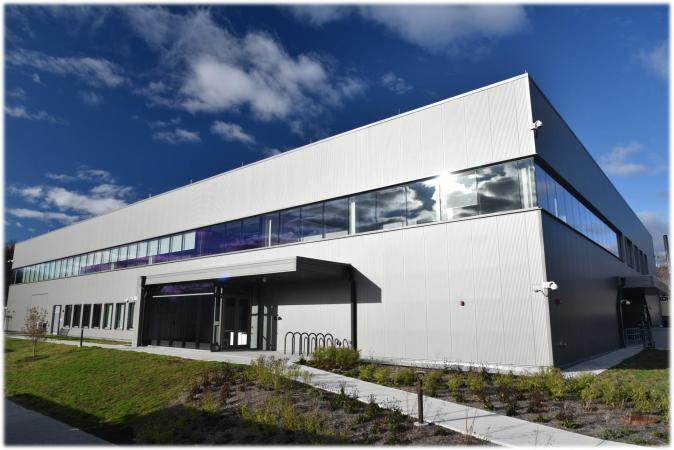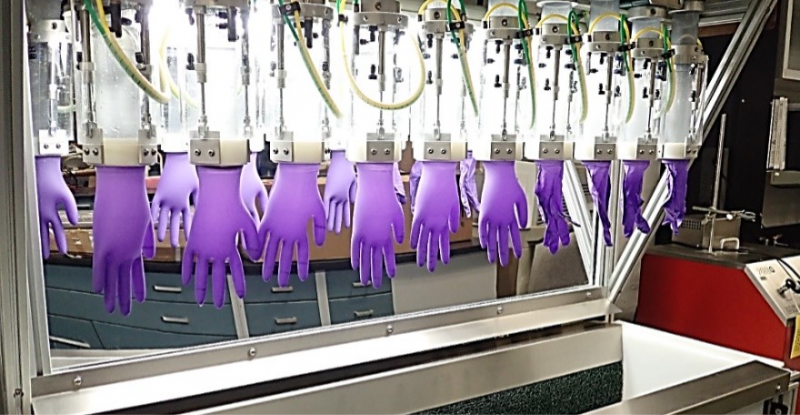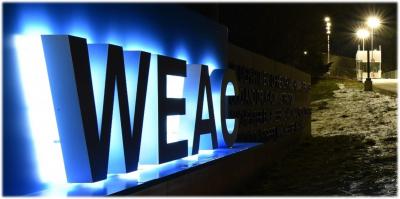Winchester Engineering Analytical Center (WEAC)
A Mission of Medical Device Safety, and More
WEAC’s new, modernized facility, completed in December of 2022, is the nation’s leading federal laboratory for medical device and radioanalytical testing. Located outside Boston, WEAC is the only FDA facility that performs analyses of medical devices—including of such life-saving equipment as CT scans, pacemakers, and defibrillators—to ensure that the medical instruments needed by Americans, often in their most vulnerable moments, are effective, sterile, and safe.
The laboratory also tests conventional x-ray systems, like mammogram machines and dental x-rays; surgical instruments; transdermal patches; infusion pumps; personal protective equipment (PPE), such as masks, gloves, and surgical gowns; tampons; condoms; and radiation-emitting consumer products, like microwaves, lasers, and UV lamps.
The evaluation of safe and high-performing PPE is a top priority for WEAC, especially in response to COVID-19 and efforts to provide our nation’s health care providers and first responders with safe and trustworthy masks, gloves, and gowns—as well as effective UVC germicide lamps and the protective eyewear needed to safely operate them. Among other advances in this area, the laboratory has refined a method for testing the liquid barrier performance of medical gowns, to shield against the spread of harmful bloodborne pathogens.
WEAC engineers and scientists also perform foreign inspections for a variety of consumer electronic products and devices—and work hand in hand with agency consumer safety officers—to assess overseas manufacturers’ compliance with FDA safety standards, advancing the safety of U.S. patients and consumers around the world.
Its staff also provide analytical support to criminal investigations conducted by ORA’s Office of Criminal Investigations, to zero in on fraudulent and unsafe medical devices. Amplifying its reach, WEAC also provides cutting-edge technical resources to state, local, tribal, and territorial partners so that medical device safety standards and initiatives are bolstered across the United States.
Unique Scientific Capabilities
Radionuclide Readiness
WEAC laboratory staff are skilled and trained to fulfill a vital, solemn purpose: to protect Americans from the possibility of radionuclide contamination of their foods, should emergency strike. In addition to conducting radionuclide assessments of domestic and imported foods in support of food safety, its researchers identify radioanalytical metrology needs for strengthening FDA radioanalytical capability and capacity essential to food safety compliance and radiological emergency response programs. Additionally, they serve in a technical advisory role for the radiological Food Emergency Response Network (FERN)—all critical functions in the event of a public health emergency.
Specialized Space, with a Powerful History
WEAC’s one-of-a-kind radiation safety capabilities span over fifty years—encompassing behind-the-scenes work ensuring the safety of our imported food supply during such national and international nuclear tragedies as Three Mile Island, Chernobyl, and most recently, Fukushima.
The laboratory’s Whole Body Counting room, a national resource constructed of pre-World War II steel, was carefully transported from WEAC’s 1950s-era laboratory to its new one. Unparalleled in its materials and construction—and sourced from the battleship USS Indiana—the room is invaluable for the critical function it serves, to screen staff for potential radiation exposure. Significantly, historic steel does not contribute “background” radiation that could otherwise skew measurements, especially when providing for the safety of public researchers and the consumers they serve.
Chemistry and Microbiology
Finding ways to ensure the sterility of increasingly complex and intricate medical devices and surgical products is a major focus for WEAC too. The laboratory develops novel strategies for eliminating surface bacteria on medical devices—without the use of antimicrobials—to prevent infections caused by biofilms that might otherwise form on medical device surfaces. (Among the problematic pathogens being targeted are those that cause nontuberculous mycobacteria infections, associated with devices used in heart and lung surgery.)
WEAC staff are also leaders in Whole Genome Sequencing (WGS), pioneering the use of this DNA-revealing technology for medical product regulatory analyses. This robust resource helps public health officials to more rapidly identify and understand the source of outbreaks, confidently identify tough-to-crack pathogens, and provide important quality assurance checks for laboratory analyses.
Engineering
WEAC, in its support to FDA’s Center for Tobacco Products to reduce dangers posed by tobacco products, also designs testing for the electronic components of vaporizers, e-cigarettes, and other electronic nicotine delivery systems (ENDS), to reduce the incidence of battery-related injuries. Other engineering projects include assessing the impact resistance of various glass lenses, including those made of glass, plastic, and lightweight polycarbonate plastic.
ORA is facilitating the renovation and revitalization of several of its laboratories through 2025. This investment in technologically focused and sustainably built laboratory facilities is an investment in the American people, as it enables the FDA to serve public health more efficiently and effectively.
WEAC is accredited to ISO/IEC 17025:2017.



